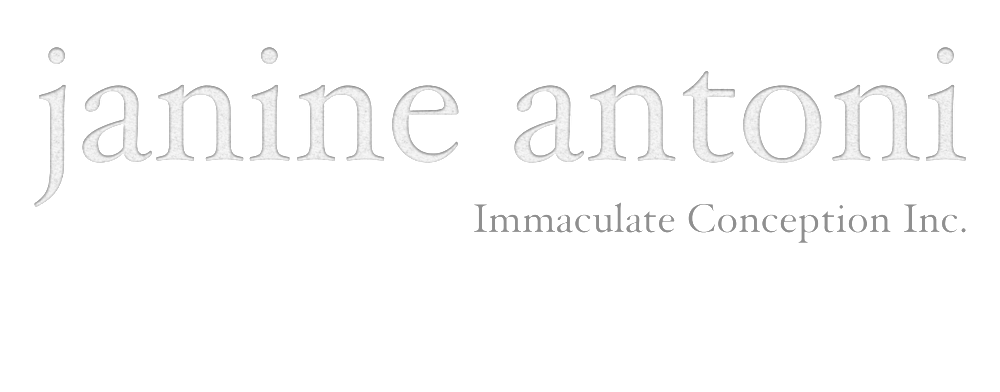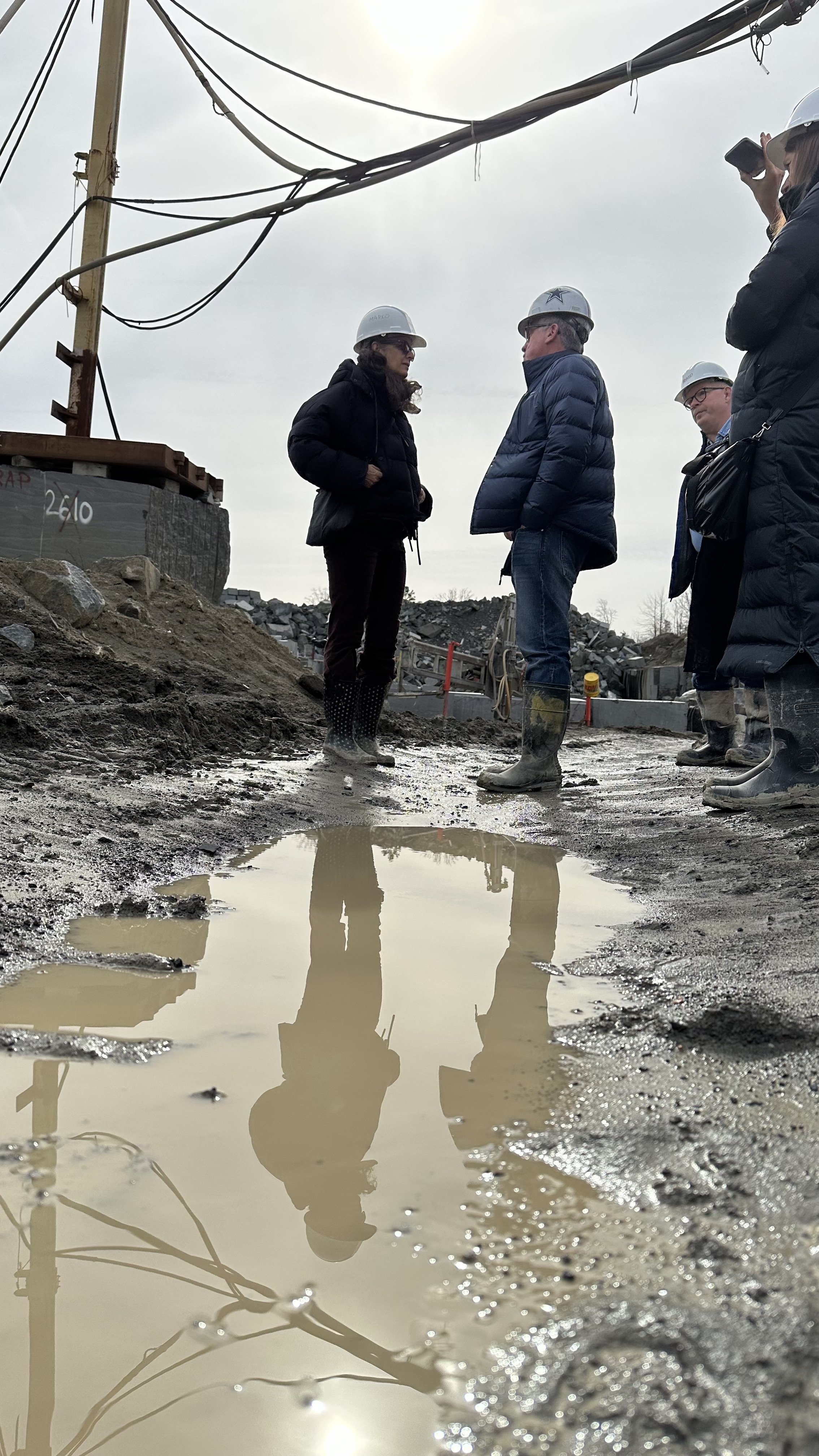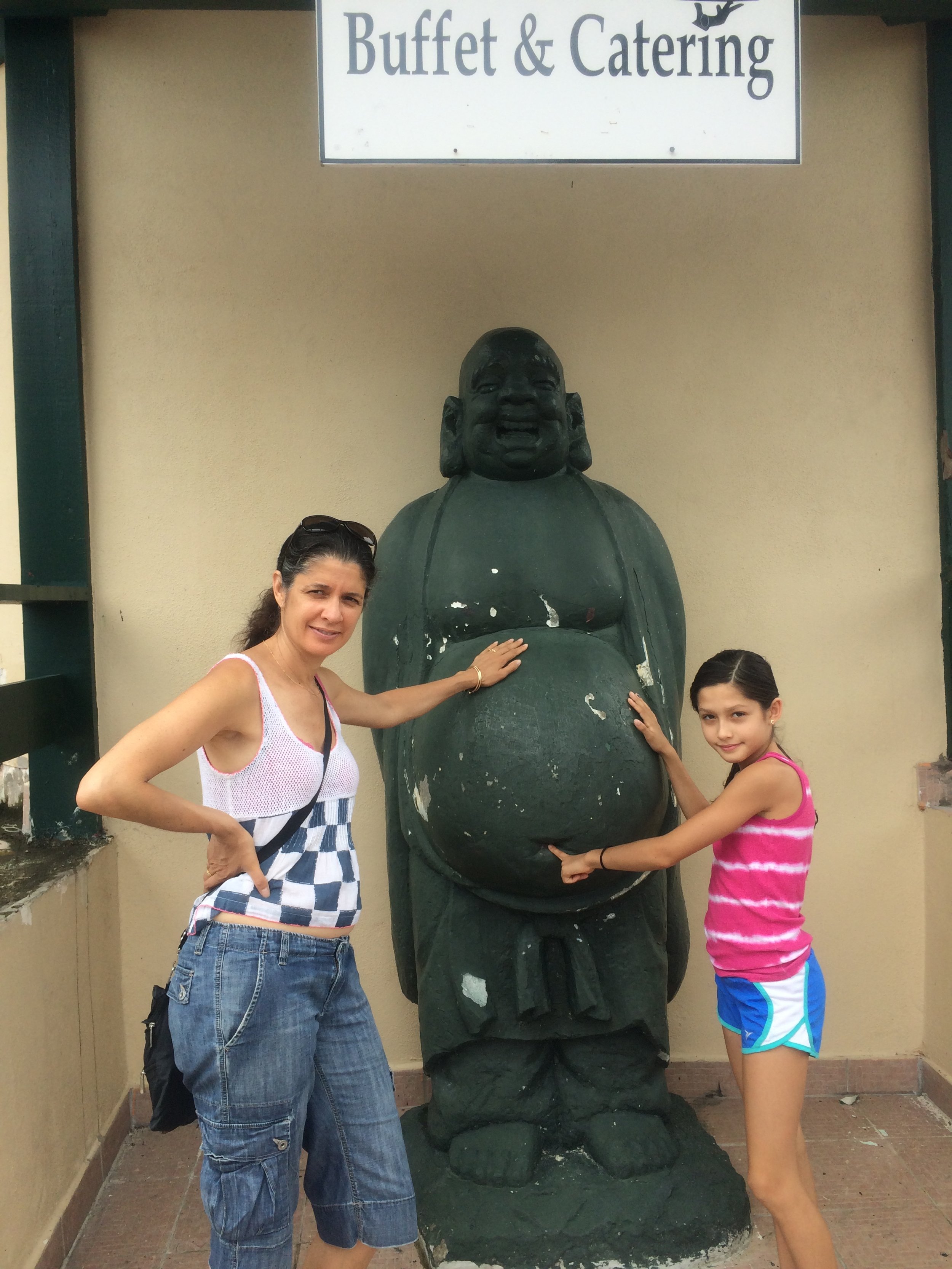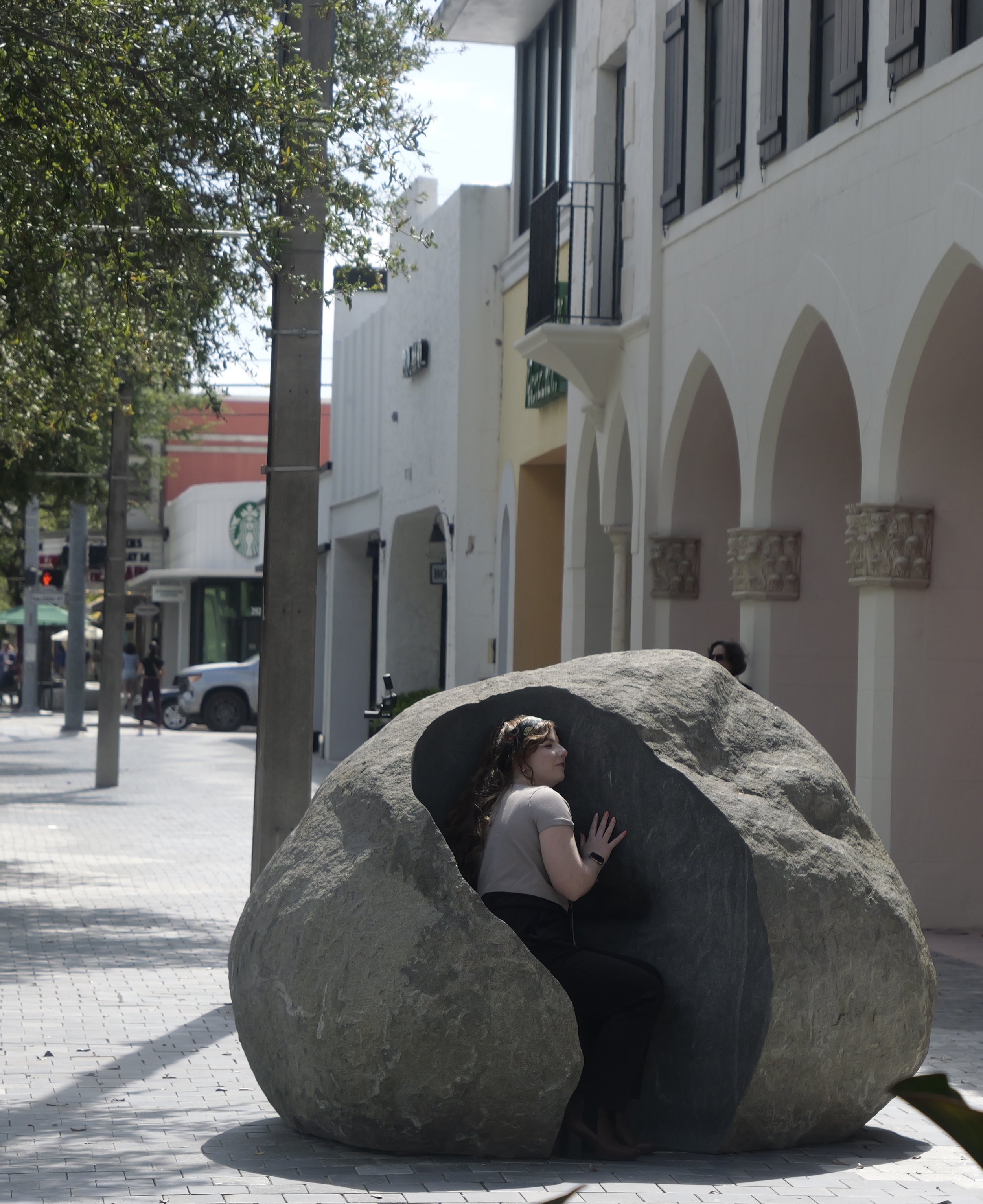Whispering Through A Stone was commissioned by the City of Coral Gables, Florida. The fabrication of the sculpture was facilitated by Urban Art Projects and the boulder was milled by Quarra Stone.
The sculpture is located at 332 Miracle Mile Coral Gables, FL 33134.
Antoni’s sculpture is inspired by a classic conversation chair. In 19th century France, this chair was used for courting. The design of the chair facilitates intimacy by putting the sitters in close proximity to one another. At the same time, it discourages too much physical contact between them by way of a shared armrest which doubles as a barrier between their bodies. The conversation chair is also known as a chaperone chair, as the sitters would often be accompanied by a third person who would be present in the room while the pair had their private conversation. Thanks to the chair, the chaperone could observe the couple while they enjoyed privacy in their conversation.
Whispering Through A Stone is similar to a classic conversation chair except that the two sitters are not able to see one another. The seats are carved into a single boulder with a small hole passing through the material between them, located between ear and mouth height. The hole carries the whisper of one seated person to the ear of another, allowing them to communicate intimately in a public space.
From the beginning Antoni imagined a round boulder, not one cut from a larger deposit. Steven Rousseau, from Quarra Stone, brought Antoni to Virginia Mist Quarry where he was the former manager. Bryan VanHorn, project manager at Quarra, and Susan Kosor, project director at UAP, joined Antoni on the expedition. With Steven’s ability to read the integrity of the stone’s interior from the markings on its surface, he helped Antoni find the perfect stone for her sculpture. Finally, after scouring the quarry, they found it- a 1900 lb boulder.
Antoni scanned the chosen boulder using the polycam app on her iPhone to estimate the size and weight in order to plan its safe trip to Maddison, Wisconsin.
Back in New York, Antoni’s studio got to work. Although the piece could have been made entirely digitally, Antoni wanted to feel her body in the sculpture so she could understand the way the stone meets the body and facilitates the conversation. Layering sheets of foam allowed her to build the general form and then refine the shape. It was a challenge to create a form that implied the body, was comfortable to sit in, and was also general enough to accommodate a variety of bodies. Studio visitors and neighbors were invited to sit in the unfinished seats in order to gauge how the subtler curves affected bodies varying in height and stature. The seats were then fine tuned. For example one side of the seat was shaved down to encourage sitters to lean towards the whispering hole. To get a sense of how it would feel and sound to whisper through stone, the holes were connected with a hollow broomstick. Finally, the surface was smoothed with a layer of spackle. Smoothness was important for the next step- scanning.
Once the foam seats had been completed, Urban Art Projects sent someone to scan them so they could be placed into a digital rendering of the boulder.
Clark Cheng from UAP worked with Antoni to fit the scans of the seats into that of the boulder. They went through many back and forth’s to achieve the right orientation and distance of the seats from the boulder’s edge. It was important that the seats be as far from one another as possible so that sitters would not have the physical sense of another body in proximity to their own. This way, the feeling of distance between the sitters is dissolved when the whisper of one touches the ear of the other.
Meet Clementine, Quarra’s Kuka KR480 MT-F robot, aptly named for its orange complexion. Once Clark had perfected the placement of the seats in the stone he passed the digital renderings along to Quarra Stone to do the carving. They programmed Clementine to do the milling. Clementine ran automatically for 18 hours a day for about two weeks, stopping for only several hours during the day so the team at Quarra could run maintenance and revise the programs. The machine uses a diamond bit and a steady stream of water that captures the dust produced by the milling. The dust creates a slurry when it mixes with the stream of water, helping to keep the diamonds exposed and sharp for cutting.
After Clementine had carved the shape of the seats, it was time for the whispering hole to join them.
Finally, the hand working team at Quarra, led by Bryan Smith, spent several days smoothing and honing down the surface of the stone. This step brought out the contrast between the smooth seats and the rough exterior of the stone, making the seats a seductive place for the body.
The rough, weathered outer surface of the rock carries the traces of the stone’s history of formation. The igneous boulder was formed out of molten rock that solidified beneath the Earth's surface over millions of years. This process makes the stone distinctly non-porous compared even to other kinds of stone. Think of a smooth granite countertop, which resists penetration by whatever’s on its surface. It is a conglomerate of evenly distributed minerals that make it a solid and even form. Its solidity is all the more apparent when pierced with the whispering hole. When a whisper passes through the hole, it passes through the deep history embodied by the stone. The softest whisper is amplified by this hard surface around the hole.
As the stone was being milled and hand worked in Wisconsin, the site was being prepared for its arrival along Miracle Mile in Coral Gables, FL. This involved selecting the exact location and orientation for the stone, and designing and pouring a foundation that could support the boulder’s immense weight.
Finally, the stone arrived on site.
Antoni explains one of her inspirations for making the artwork with the following story.
“I grew up in Freeport, Grand Bahama. At the center of town was the International Bazaar, a tourist destination with shops and restaurants from countries around the world. Once a week my family would go out for dinner and this was a frequented spot. In front of the Chinese restaurant was a laughing Buddha with a big belly. My father told my brothers and I that if we rubbed the Buddha’s belly our wish would be granted. That sentiment created a ritual. The minute we pulled into our parking spot my brother, Brian and I flung open the door of the car and began to run until we reached the bottom of two sets of stairs that lead up to the Buddha. The rule was that each of us had to choose one staircase and we would race to meet at the top where the Buddha sat. The first to touch the Buddha’s belly would have their wish come true.
Here is a picture of the Buddha and my daughter, probably the same age that I was when I raced my brother. I was happy to introduce her to this sculpture and tell her my story.”
In a way Miracle Mile is like the International Bazaar; it is a place to eat, to convene, and to shop. Antoni hopes that Whispering Through A Stone will likewise become a site for ritualized connection between members of the community. That a pair of friends might meet there to talk through a conflict. That someone might take a lover to tell them “I love you” for the first time. Or perhaps like pillow talk, or like letters exchanged through the mail between friends who speak regularly, the conversations that pass through the stone will stand apart from the ones that unfold everyday. Whispering through a Stone is made with the intention of facilitating a new kind of communication.
Much of Antoni’s past work has concerned itself with how the body impresses itself onto the world and how the world likewise impresses itself onto the body. This could be described as the process of living. Whispering Through A Stone is carved to conform to the negative shape of the body, encouraging the viewer to immediately imagine a body in the negative cavity. The cavity's bodily impression, along with its smooth, polished inner surface, invites a viewer to inhabit the space and have an exchange. Now that Whispering through a Stone has found its place on Miracle Mile, its meaning will be shaped by the community’s engagement with the artwork, be it through the whispers that pass through the stone, the moments of connection it facilitates, or the rituals that develop through its use.
This is an invitation.



































